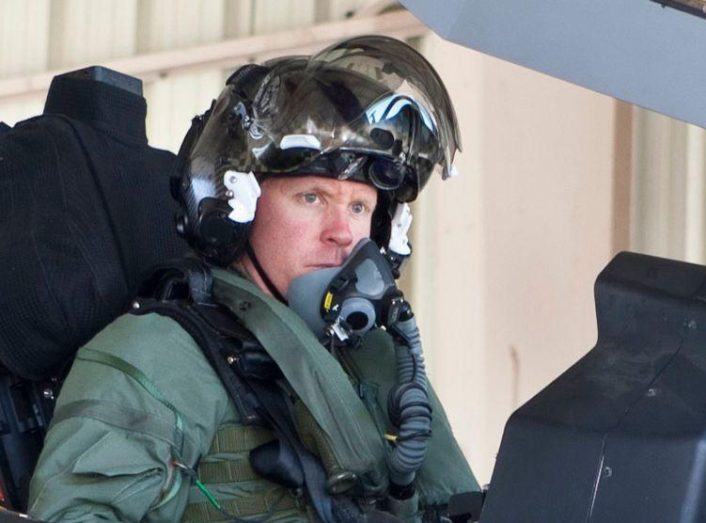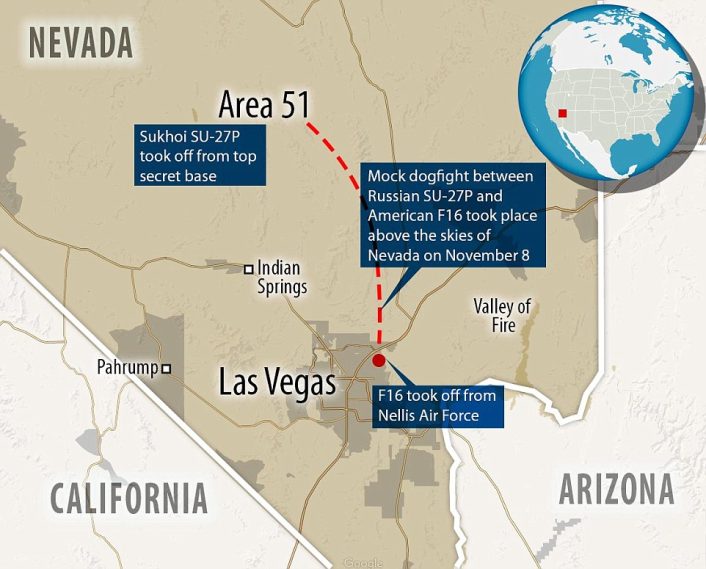Unnamed Sources in Published Report Suggest Pilot May Have Been Flying Russian Aircraft.
In a story published late Monday, September 11, 2017 on AviationWeek.com, new information has been revealed about the type of aircraft that USAF Lt. Col. Eric Schultz, call sign “Doc”, may have been flying at the time of his mysterious crash 100 miles Northwest of Nellis AFB in the Nevada Test and Training Range.
Speculation about the crash was fueled by Air Force media releases that did not indicate the type of aircraft that was being flown by Lt. Col. Schultz on Tuesday, September 5, 2017 when the accident occurred. There was also a delay in the story reaching news media that raised further questions since the accident was reported after another, unrelated accident involving two A-10s, was reported sooner.

AviationWeek.com correspondent Guy Norris wrote late Monday, September 11, that, “Sources indicate Schultz was the Red Hats squadron commander at the time of his death. The Red Hats became an unnumbered unit within the Detachment 3, AFTC test wing after the 413th flight test squadron (formerly 6513th test squadron) was deactivated in 2004. Over recent years the unit has operated a variety of Russian-developed combat types, including the MiG-29 and several Sukhoi-developed models such as the Su-27P, one of which was recently observed flying in the vicinity.”
The photos of the SU-27P referred to by Guy Norris on AviationWeek.com first appeared on TheAviationist.com on January 6, 2017 when we published the shots taken by Phil Drake from Tikaboo Peak outside Groom Lake, Nevada, on November 8, 2016 between 3:00 and 3:25 PM local time.
Photographer Phil Drake told TheAviationist.com, “I took my camera out and photographed the ensuing dogfight between the Flanker and a F-16. The sortie seemed to consist of a head-on intercept, conducted at descending altitudes from 30 down to 20 thousand feet, and after each intercept a turning dogfight ensued after they had flashed past each other.
The highly maneuverable Flanker was a single seat version, a Su-27P, and it pulled out all of its best moves to get behind the F-16. I watched in awe as the pair fought it out for 25 minutes before they both climbed to altitude and flew back into Groom Lake restricted airspace. My scanner remained silent throughout the whole encounter.”
Guy Norris’ story on AviationWeek.com also reports that, “Given the approximate location provided by the Air Force, it appears the accident occurred midway between Groom Lake and Tonopah Test Range airfield, both of which are operated by Detachment 3, Air Force Test Center (AFTC). The site is responsible for test and evaluation of classified “black” aircraft as well as foreign types which are flown by the Red Hats for tactics assessment and dissimilar training against front line Air Force units.”

The Air Force has not provided any additional information on the specifics of the Lt. Col. Eric Schultz crash except for the famous tweet quoting USAF Gen. David L. Goldfein, Chief of Staff of the Air Force, who, on Saturday morning, September 9, told Military.com, “I can definitely say it was not an F-35.”

Whether the U.S. Air Force will follow-up with additional information in the crash of Lt. Col. Eric Schultz is unknown. If Lt. Col. Schultz was involved in testing, evaluation and training with opposing forces aircraft in a classified program that remains ongoing the information may never be released. Additionally, the accident, if it did involve non-U.S. opposing forces aircraft, may compel the Air Force to change its opposing forces training program as seen in the now famous Phil Drake photos of the Su-27 outside Groom Lake.
Top image credit: Phil Drake









